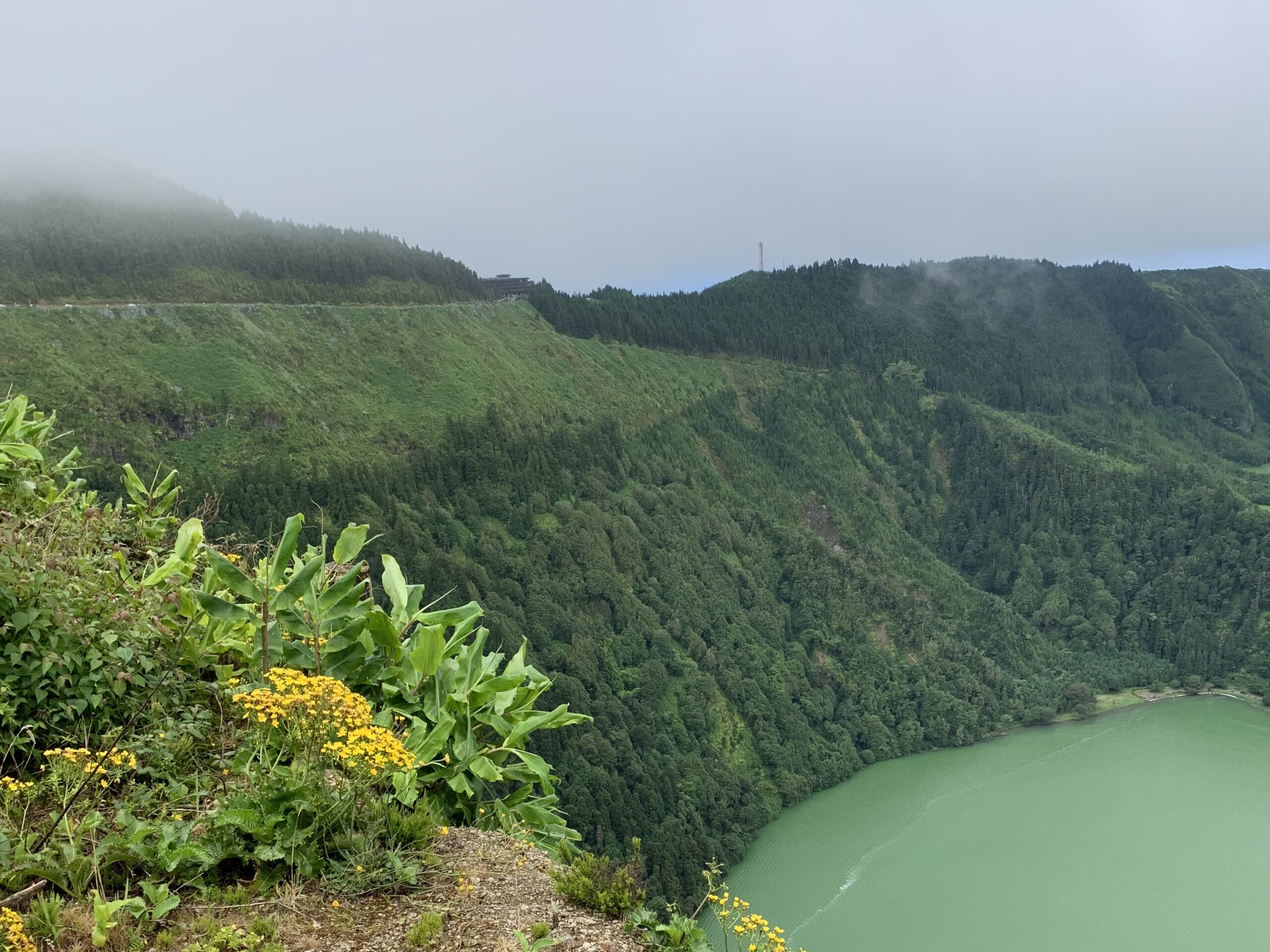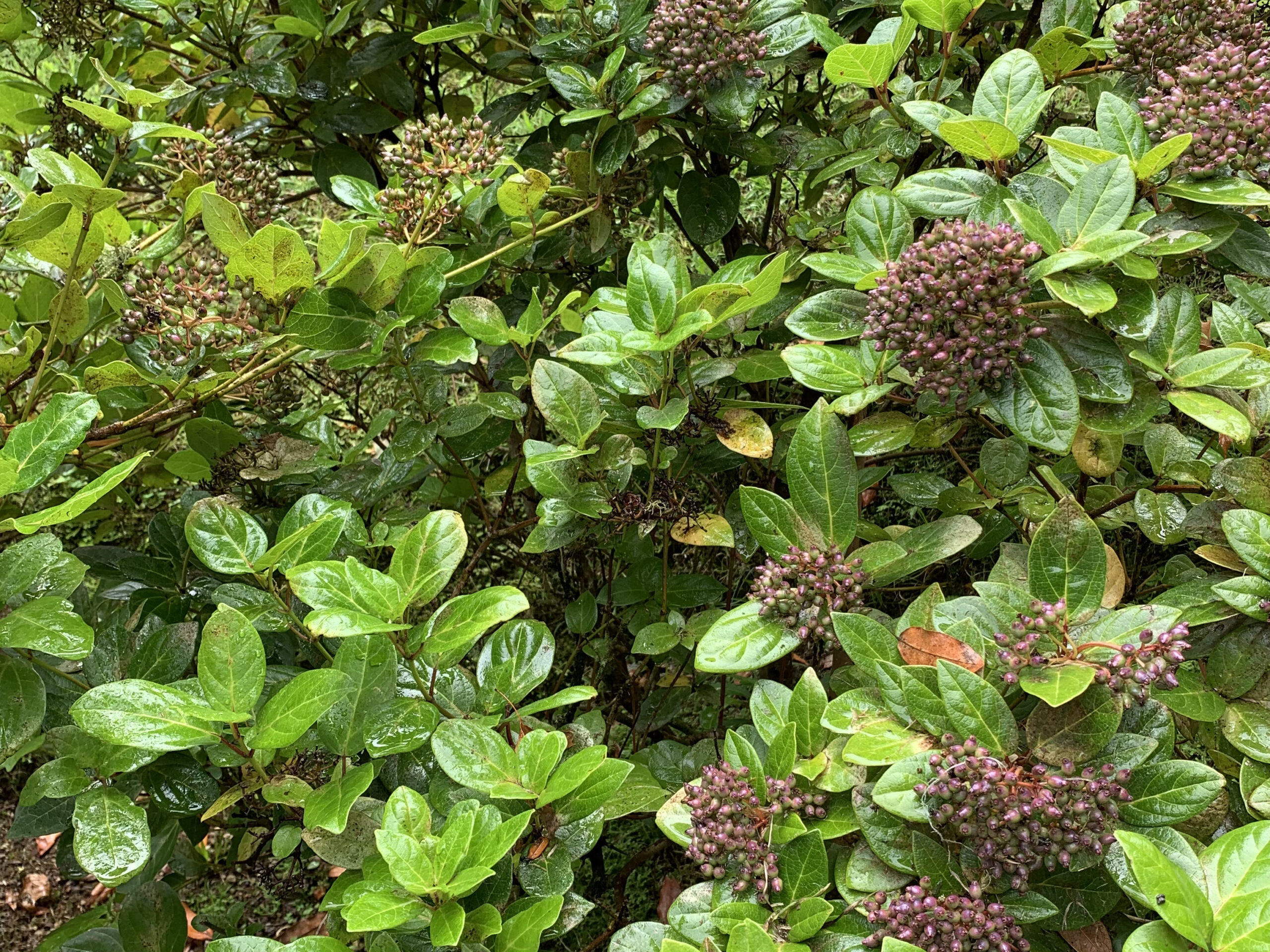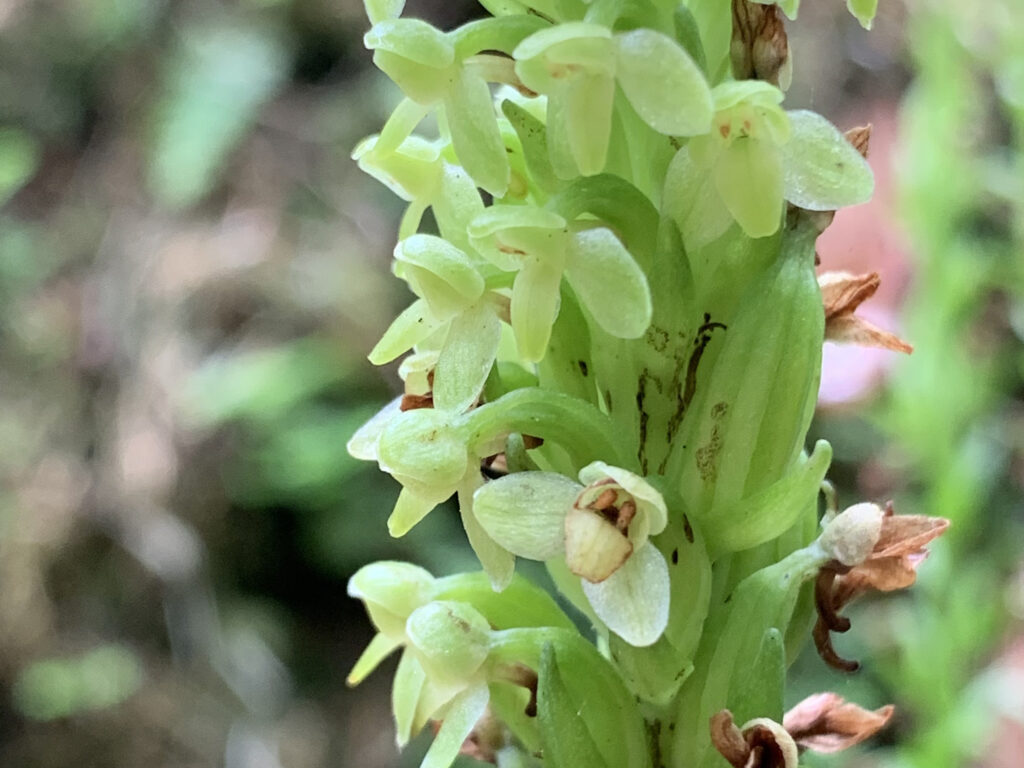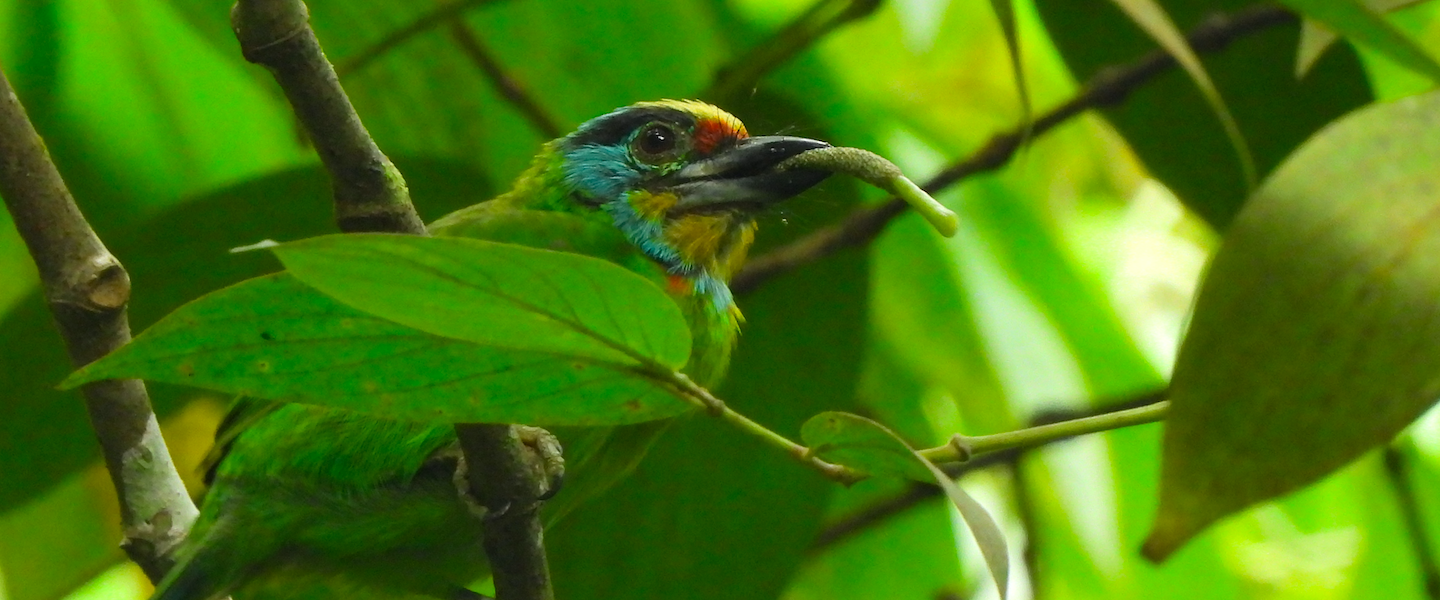During the aftermath of COVID-19 lockdown, I solo traveled to São Miguel, the main island of Azores archipelago, once borders reopened to tourism in August 2021, now two years ago. The island itself has plenty of endemic species of many fauna and flora groups, some of them shared within the archipelago and with other islands of Macaronesia. For just over a week, while enjoying an attractive climate and impressive landscapes, I tried to find as many new and unique species of all kinds using public transport and walking around. Lack of good optics by the time and a relaxed approach made the trip more calm and hiking-oriented. This means that I failed to spot the only avian endemism of the island, the Azores bullfinch (Pyrrhula murina) and potential vagrant birds. Regardless, Azores left a footprint of impressive landscapes and great memories worth writing about.

I based my trip in Ponta Delgada, the capital city of the region, a coastal town built of white and lava black rocks. Crops of pineapple, tea and other exotic plants thrive under the climate of the area and part of the tourism has adapted to it. The airport, on top of a cliff next to the town, has extensive grasslands where I found the first local specialties: flyover buzzards (Buteo buteo) of the endemic ‘Azores‘ rothschildi form, the island canary (Serinus canaria) and the calls of the local subspecies of common quail (Coturnix coturnix). The pier of the town has held some vagrant every now and then — in the afternoons after my daily walks, it was filled of the ‘Azores‘ form atlantis of yellow-legged gulls (Larus michahellis), and common terns (Sterna hirundo).

The gardens of old manor houses are now beautiful remnants of the extravaganza and love for botany and gardening of their former owners and are today open parks and gardens. In Ponta Delgada, two gardens stand out. Jardim Botânico José do Canto has an interesting history and plenty of sculptures, it is wider in area and has an entrance fee, whereas Jardim Botânico António Borges is an open park with a rather wilder approach and plenty of hidden corners to visit. Visiting both parks in a morning resulted in good views of the local races of several species familiar to me: blackcap (Sylvia atricapilla), blackbird (Turdus merula), wood-pigeon (Columba palumbus), starling (Sturnus vulgaris), and robin (Erithacus rubecula). I also spotted some Madeiran wall lizards (Teira dugesii) and introduced species including domestic chicken (Gallus gallus), Muscovy ducks (Cairina moschata) and Iberian waterfrogs (Pelophylax perezi) foraging free.

An obligated visit is Furnas and its magical Jardim Botânico Terra Nostra Garden. Hot springs and lush rain forests await the visitor and it bears one of the world’s biggest collections of camellias and cycads. Next to the hot springs, high-pitched sounds coming from a hollow trunk unveiled a group of tens of roosting Azores noctule (Nyctalus azoreum), the only endemic mammal of the archipelago, which I spotted before due to its unusual daylight flying habit. The flowers were visited by different butterflies, including the endemic race azorensis of large white (Pieris brassicae). Among the camelias, the endemic ‘São Miguel‘ azoricus form of goldcrest (Regulus regulus) looked for insects and fed three fledglings hiding in the thickness. The Azores chaffinch (Fringilla moreletti) seemed to be present wherever people could leave some snacks left behind.

I particularly enjoyed the forest of endemic plants, as it helped me become familiarized with the species I would find later on my hikes — all in all, this whole trip was quite botany-centered. Indeed, I recognized the first fayas (Myrica faya) just a bit higher from Furnas, among the ubiquitous invasive Japanese redwoods (Cryptomeria japonica). It was great to see blackbirds and blackcaps skulking through Azores junipers (Juniperus brevifolia), Cape myrtles (Myrsine africana) and lilly-of-the-valley trees (Clethra arborea), and enjoyed the explosion of fruis of a big pau-branco (Picconia azorica) — a species unfortunately almost extinct in the island. In the numerous ponds and streams of the garden, there were several moorhens (Gallinula chloropus) and a friendly ruddy shelduck (Tadorna ferruginea) — part of the collection of the garden, as this species is considered extinct in the archipelago.

My first big walk started in the south of the island by Água de Alto and aimed to reach Lagoa do Fogo at 575 m.a.s.l. As I ascended, the level of anthropic pressure seemed to decrease on and on. Once I left the built-up area, then fields and grasslands dominated the landscape. I found what surprisingly was the only gray wagtail (Motacilla cinerea) of my trip, the local race patriciae being endemic to the archipelago. Afterwards, the mist covered everything and I couldn’t see more than the highland cloud forest typical of Macaronesia. Heather (Calluna vulgaris) and Azorean heath (Erica azorica) dominate the area, with plenty of Azorean laurustinus (Viburnum treleasei), Azores blueberry (Vaccinium cylindraceum), Portugal thyme (Thymus caespititius), Azores ivy (Hedera azorica) and mats of yellow flowers of the São Miguel-endemic rigid hawkbit (Leontodon rigens). Good numbers of Azores chaffinches and São Miguel goldcrests in the mist and the occasional Azores gull flying on top were the only birds I could see through the thick mist once I reached the Lagoa — an impressive view, every time the clouds dissipated a bit.

On the way down, the path crossed numerous levadas (water ditches in the mountains) and denoted the humid environment, explaining the thick, pristine laurel forest present on that side of the hike. Macaronesian hollies (Ilex perado) and Azores laurel (Laurus azorica) dominated the landscape and I found some flowered short-spurred butterfly orchids (Platanthera pollostantha). As excited as I was to be in the laurissilva, and as much as I am mostly highlighting endemics, the whole island — and even forests like this one, virtually as remote as it gets — are heavily invaded by alien species, especially Japanese cedarwood, Kahili ginger (Hedychium gardnerianum) and hortensia (Hydrangea macrophylla), all as picturesque as harmful.

Azores has a reputation among the general public for whale-watching. As I would learn later, people descending of families that used to go whaling for a living are now owners of some of the whale-watching companies in the islands, working either in the boats or whale-spotting from the shore. Bans on whaling motivated this shift which eventually provided a more sustainable way of living. For the visitor, it gives a bright opportunities to find different whales and dolphins, as up to 24 species inhabit these waters. Few companies were fully operative in my visit, right during the first COVID-19 open summer in 2021. I found no bird-oriented sea tour available — low chances of spotting tubenoses, including the enigmatic Monteiro’s storm petrel (Hydrobates monteiroi), breeding just in two small islets off Graciosa this time of the year. I compared the companies open once I was in Ponta Delgada and got the impression that prices were quite higher on the internet. We departed the day later, once good sea conditions were confirmed, after I grabbed a snack on Ponta Delgada pier and ate it under the watchful eyes of Azores yellow-legged gulls and Atlantic red rock crabs (Grapsus adscensionis). While I waited, I could see plenty of Mediterranean parrotfish (Sparisoma cretense) and a big purple starfish (Ophidiaster ophidianus) underwater, right in the port.

The boat was fully equipped for this sort of activity, and although the tour was clearly oriented to the general tourist, the guides were eager to share more information for whoever interested. We departed Ponta Delgada and sailed towards the northwest. Bordering the island, an Azores buzzard took off from up the cliffs and circled above us, just past the airport area. Then, we started spotting flying fish (fam. Exocoetidae) jumping off the water, and the ubiquitous Cory’s shearwater (Calonectris borealis) once we reached a certain distance from the shore.

The main characters of the 5 h tour were indeed the cetaceans! We managed to find a total of five sperm whales (Physeter macrocephalus), including a mother with its calf. This massive, charismatic species is not easily seen in these sort of tours worldwide, and Azores and Dominica are the only places in the world where they can be even spotted from the shore. We also joined two groups of striped dolphins (Stenella coeruleoalba), one of them very numerous. These playful mammals made us all enjoy their jumps and loops all around us, the group being so big it felt like they were everywhere. The first time I observed cetaceans from so close felt really magic.

The rest of the trip involved less nature. Sete Cidades is worth a visit, and the views are fantastic from top of the hills around the town and its Lagoa — here, the density of flowered furadas (Hypericum foliosum) was the greatest, and I later learnet about long-staying American vagrant birds I missed. Westwards, sea pools get warm with the thermal activity and the tides in Ponta da Ferraria. In the north of the island, I walked across several villages and managed to find a beautiful, endangered plant belonging to the only Azores-endemic genus, the Azores bellflower (Azorina vidalii) — I managed to spot it even in the walls of the pier in urban Rabo de Peixe. Again based in Ponta Delgada, walking towards Vila Franca do Campo resulted in finding some ruddy turnstones (Arenaria interpres) and an endemic sea-lavender (Limonium eduardi-diasii) only accepted as a valid species after my trip!




